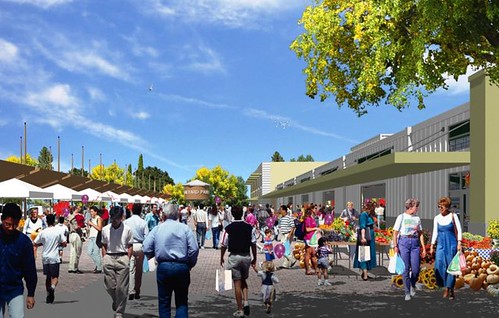
Farmers markets are evolving. They are moving away from seasonal, parking lot produce stands and becoming year-round, self-sustaining, community hubs. As more and more cities and communities look for ways to strengthen their local economies, we’ve seen more emphasis placed on both the infrastructure and the actual structure of their farmers markets. That’s where I come in.
As an architect who specializes in farmers markets at USDA’s Agricultural Marketing Service (AMS), I work with local architects, state agriculture agencies or farmers market associations on development projects approved by Secretary Vilsack. Acting as an advisor and research expert for these communities, my goal is to help create a year-round center that brings local foods to consumers while sustaining itself in terms of environmental soundness and financial revenue.
Together we examine the site, surrounding environment and the design requirements for the marketplace. I look at everything from the initial site design to the financial suitability of the planned facilities, basing my feedback and recommendations on the industry standards, building codes and protocols AMS has developed over the last decade.
Site assessment is critical to determine the fit of a new facility in the existing environment. After developing a design concept I provide cost estimates for feasibility assessment. Whether designing a warehouse, a multi-purpose community pavilions or retail centers these factors impact the longevity and economic sustainability of the market.

More and more, we’re also looking at the energy consumption needs of farmers markets. For a project like Santa Fe’s LEED certified farmers market, it is obvious that having a market fit into the area infrastructure is just as crucial to its success as having a market that fits into the community culture, like Michigan’s year-round, indoor/outdoor market arena.
For me, each of the dozen or so market plans currently in development need to be a perfect blend of design aesthetics, agricultural vision, their community and cultural environment, and economic reality. Molding these factors over a foundation of best practices and standards helps lend structure to farmers markets as they continue to grow and adapt to the communities they serve.
Visit the wholesale markets and facility design website to learn more about our architect and design services, and to see projects we’ve already completed.
The USDA Know Your Farmer, Know Your Food Compass is another helpful reference, illustrating additional ways USDA's working to support local food. Use the map to discover other work in you community.

